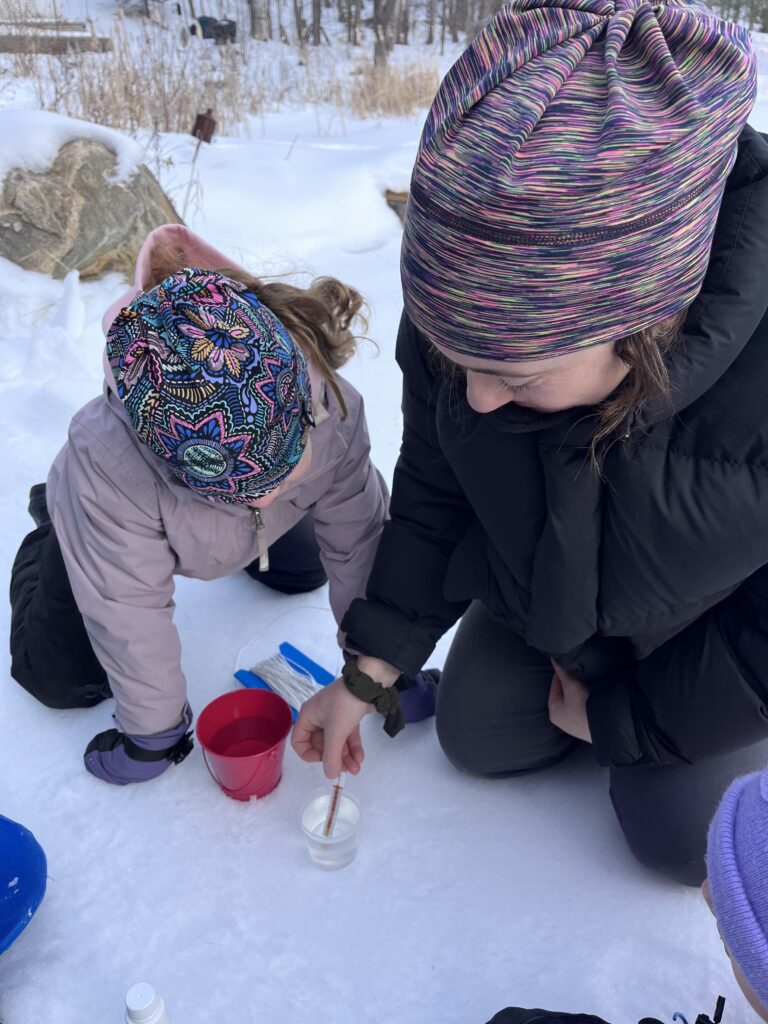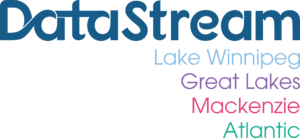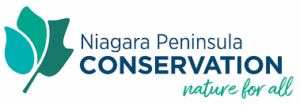Lake Erie Rangers – 2024/25 winter season report
The Lake Erie Rangers are back for another impactful season! In 2024–2025, with support from the Canada Water Agency’s Freshwater Ecosystem Initiative, we expanded our community science network, deepened scientific partnerships, and collected vital water quality data across the Lake Erie watershed—from the Niagara region to the western basin.
Here’s a look at what we accomplished and where we’re headed next.
Winter monitoring: Tackling road salt impacts

With winter bringing snow and salt, our Rangers braved the cold to monitor chloride levels in local streams, rivers, and nearshore waters. Using Winter Road Salt Monitoring Kits, volunteers tested for chloride, conductivity, and temperature, helping us understand how road salt runoff affects freshwater health.
- 58 volunteers
- 39 kits distributed
- 49 locations monitored
- 163 observation sets collected
- 1,695 data points generated
Our Winter Monitoring Field Guide, released this year, included winter safety tips, blitz instructions, and Lake Erie-specific context. We also piloted a new Ice Watch component to record ice coverage, which proved valuable for understanding sampling limitations and seasonal patterns.
Our monitoring revealed concerning chloride levels at many sites. The Grand River at Pioneer Tower in Kitchener recorded the highest single reading at 303 ppm, well above the natural background level of 100 ppm. Several other sites, including Black Creek, Big Forks Creek, and the Welland Canal, also showed average chloride levels above the 100 ppm threshold, with consistently high conductivity values. These results point to significant winter salt impacts in both urban and rural areas.
All winter data is available on the Lake Erie Rangers winter road salt monitoring group page
Building the baseline: Expanding year-round monitoring
Beginning in March 2025, we launched recruitment for baseline water quality monitoring across the watershed. Volunteers are using Water Rangers Freshwater Explorer Kits and YSI meters to track pH, dissolved oxygen, temperature, conductivity, hardness, and clarity. This core dataset is helping us build a clearer picture of Lake Erie’s long-term freshwater health.
Hands-on training sessions (covering baseline monitoring, E. coli testing) are underway, with the first held in Niagara on May 6, and additional sessions planned for the lake’s western end.
Testing new methods: Innovation in the field
We piloted and field-tested several new monitoring tools this year:
- Peristix and Periplates for nutrient testing: Piloted at two sites in Niagara, with validation in partnership with McMaster University and expansion to 12+ sites planned for 2025.
- RCards (rapid E. coli testing): Now part of our community toolkit, with collaborators supporting validation for quality assurance.
Instructional materials for both methods are being co-developed with scientific partners to ensure they’re accessible to volunteers. A video tutorial for winter kits was also produced to improve training reach.
Stronger together: Collaboration drives impact
This year saw stronger coordination than ever:
- McMaster University supported method development and validation.
- RAEON/University of Windsor are co-leading monitoring plans for the lake’s western basin.
- Niagara Peninsula Conservation Authority (NPCA), Swim Drink Fish, and Niagara College supported site selection, logistics, and outreach.
- We also shared results at national and regional events, including the National Water Quality Monitoring Conference, Great Lakes Student Conference, and binational workshops reaching over 500 attendees.
Growing our reach: GLLAF Support
In 2024, we received funding from the Great Lakes Local Action Fund (GLLAF) to expand our work into the Lake Ontario watershed. This includes new riparian planting projects in Niagara and the western Lake Erie basin, helping reduce nutrient runoff and restore shoreline health.
Looking ahead
With new tools, new partners, and more trained volunteers than ever before, the Lake Erie Rangers are poised for a powerful year ahead. We’re continuing to refine methods, standardize protocols across borders, and make community science more accessible and impactful.
Thank you to all our volunteers, partners, and supporters for helping protect and restore the waters we share.
Find out data
Baseline data is available on DataStream, ensuring it meets national standards for use in State of the Great Lakes and Lakewide Action Management Plan (LAMP) reporting.
All winter data is available on the Lake Erie Rangers winter road salt monitoring page, and highlights were shared via a public-facing report and infographic through our newsletter and social media.

This project is generously funded by a 3 year the Canada Water Agency’s Freshwater Ecosystem Initiative grant. We are grateful for this incredible support.






